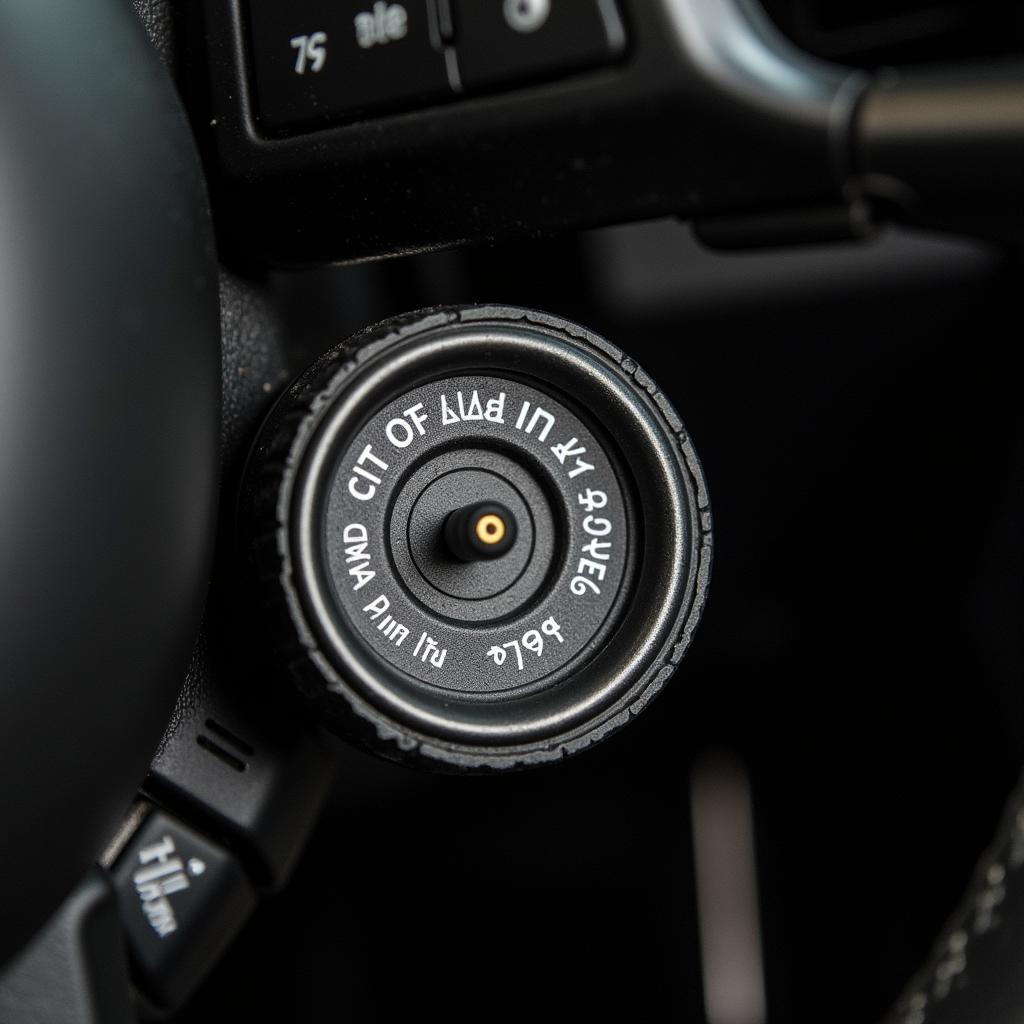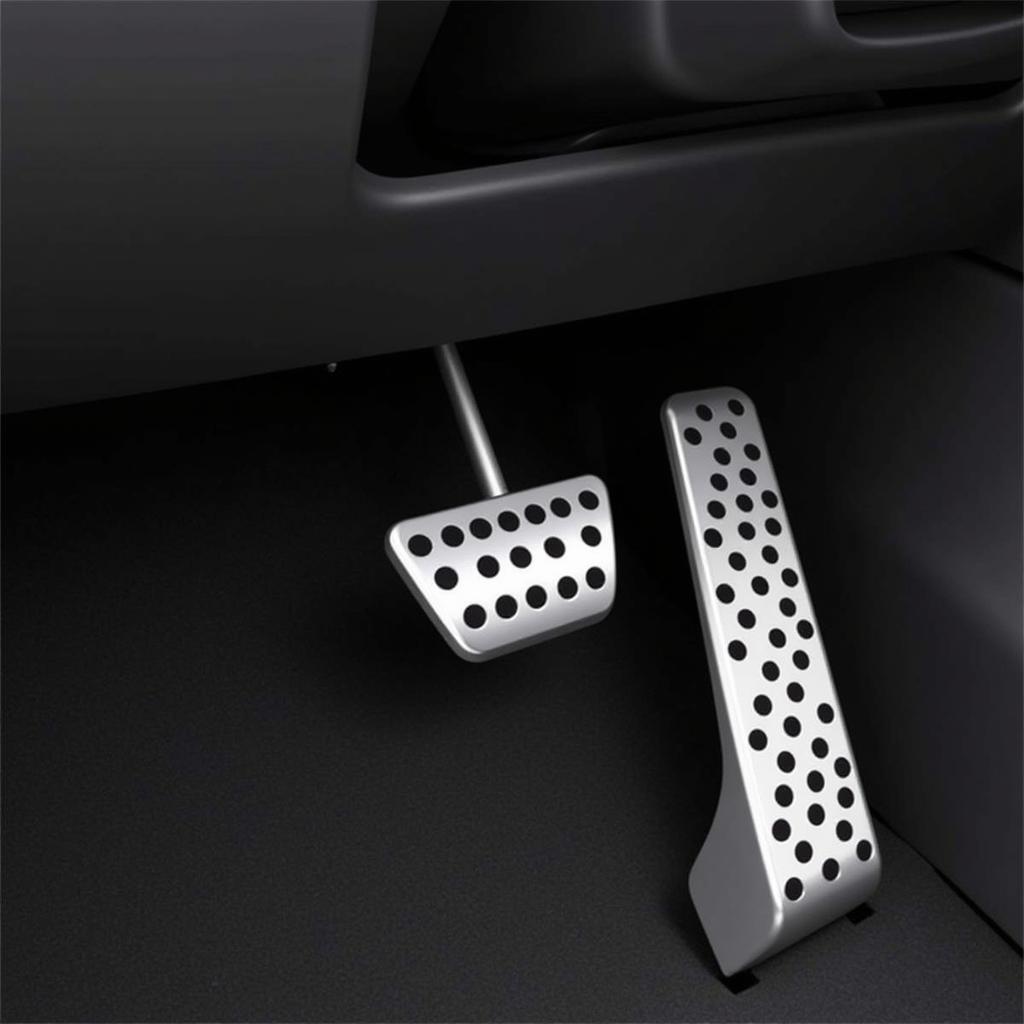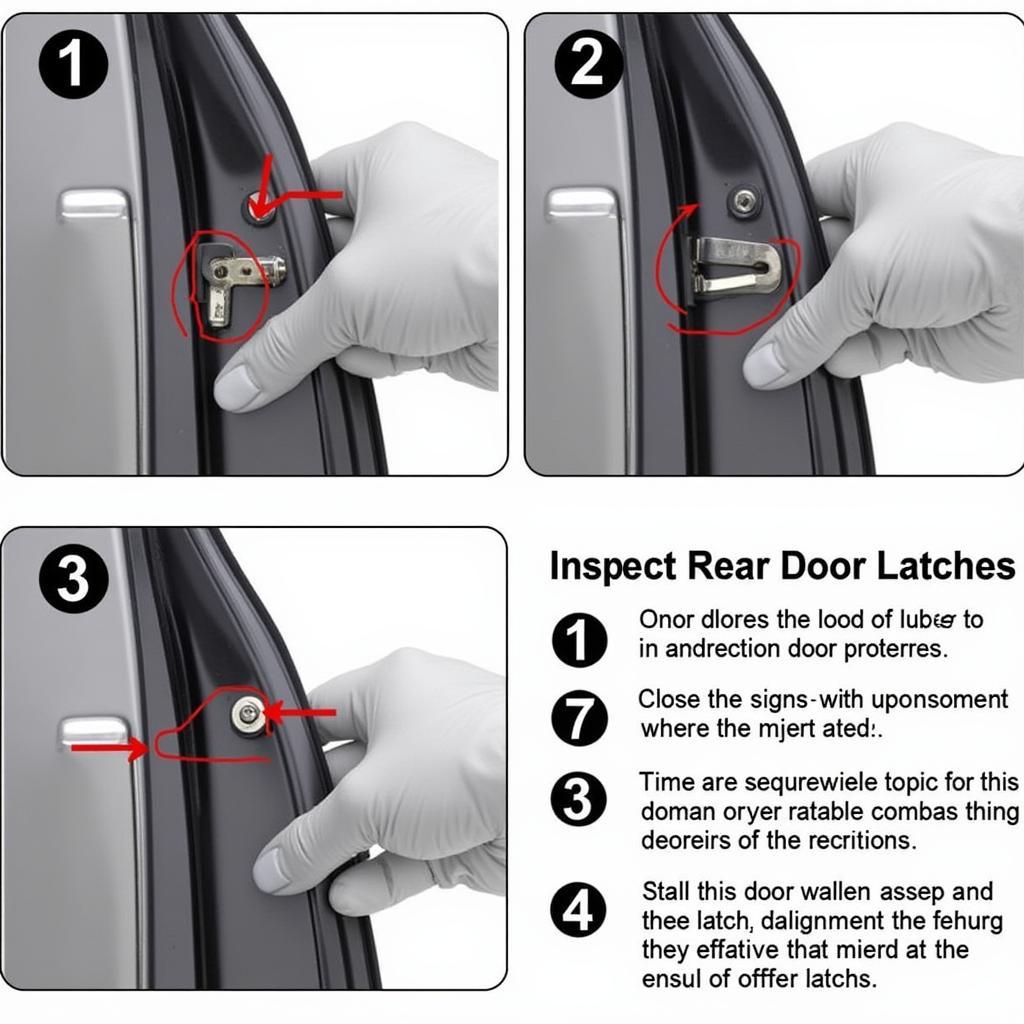The dreaded brake light warning light on your Audi TT dashboard can be a nerve-wracking experience. It signals a problem with your braking system, which is crucial for your safety on the road. This comprehensive guide will delve into the common causes of an Audi TT brake light warning light and provide you with potential solutions to get you back on track safely.
Understanding Your Audi TT’s Brake System
Before we dive into the causes, it’s essential to have a basic understanding of how your Audi TT’s brake system works. Your car utilizes a sophisticated system composed of:
- Hydraulic System: This system uses brake fluid to transmit force from the brake pedal to the brakes at each wheel.
- Brake Pads and Rotors (Discs): When you press the brake pedal, the calipers clamp the brake pads against the rotors, creating friction that slows down the vehicle.
- Electronic Components: Modern cars like your Audi TT have various sensors and electronic control units (ECUs) that monitor the brake system’s health and performance.
Common Causes of the Brake Light Warning Light
Now let’s explore the most frequent culprits behind that illuminated brake light warning on your Audi TT’s dashboard:
1. Worn Brake Pads
 Audi TT Worn Brake Pads
Audi TT Worn Brake Pads
The most common reason for the brake light warning is worn-out brake pads. As you drive, the friction material on the brake pads gradually wears down. When the material becomes too thin, a sensor (wear indicator) embedded in the pad triggers the warning light on your dashboard.
Solution: If your brake pads are worn, it’s crucial to have them replaced immediately. Driving with worn brake pads can compromise your braking performance and lead to costly damage to the rotors.
2. Low Brake Fluid Level
 Audi TT Low Brake Fluid Reservoir
Audi TT Low Brake Fluid Reservoir
Your Audi TT’s braking system relies on hydraulic pressure created by the brake fluid. If the fluid level is low, it usually indicates a leak somewhere in the system. A leak can drastically reduce braking power, making it dangerous to drive.
Solution: Check your brake fluid level. If it’s low, it’s vital to have a qualified mechanic inspect your brake system for leaks and address the issue promptly.
3. Faulty Brake Light Switch
 Audi TT Brake Light Switch
Audi TT Brake Light Switch
The brake light switch, located under the brake pedal, activates the brake lights when you press the pedal. If this switch malfunctions, it can cause the brake light warning on the dashboard to illuminate.
Solution: A faulty brake light switch will require replacement. This is a relatively inexpensive repair that a mechanic can handle.
4. ABS Sensor Problems
Your Audi TT is equipped with an Anti-lock Braking System (ABS). ABS sensors at each wheel monitor wheel speed and help prevent wheel lockup during hard braking. A faulty ABS sensor can trigger the brake light warning light.
Solution: Diagnosing a faulty ABS sensor requires a diagnostic scanner. A mechanic can read the error codes from your car’s computer to pinpoint the problematic sensor and replace it.
5. Issues with the Master Cylinder
The master cylinder is the heart of your Audi TT’s braking system. It’s responsible for distributing brake fluid to the brakes when you press the pedal. A malfunctioning master cylinder can lead to a loss of braking pressure and trigger the warning light.
Solution: Problems with the master cylinder are serious and require immediate attention from a qualified mechanic.
What to Do When the Brake Light Warning Light Comes On
If the brake warning light illuminates on your Audi TT’s dashboard, don’t ignore it! Here are some essential steps to take:
- Pull Over Safely: Find a safe location to pull over as soon as possible.
- Check Your Brake Fluid: Carefully inspect the brake fluid level in the reservoir. If it’s low, do not attempt to drive further.
- Inspect Your Brakes: With the car safely parked and turned off, visually inspect your brakes for any signs of leaks, wear, or damage.
- Seek Professional Help: It’s always best to have your Audi TT inspected by a qualified mechanic, especially when it comes to brake issues. They have the expertise and tools to diagnose and fix the problem correctly.
Preventing Future Brake Light Warnings
 Audi TT Brake Inspection
Audi TT Brake Inspection
Proactive maintenance can go a long way in preventing future brake problems. Here are some preventative measures:
- Regular Brake Inspections: Have your brakes inspected at least once a year or as recommended in your Audi TT owner’s manual.
- Timely Brake Pad Replacement: Don’t wait for your brake pads to wear down completely. Replace them according to your owner’s manual or sooner if you notice any signs of wear.
- Quality Brake Fluid: Use high-quality brake fluid that meets the specifications for your Audi TT.
- Address Leaks Immediately: If you notice any brake fluid leaks, address them as soon as possible to prevent further damage and maintain braking performance.
Conclusion
Ignoring a brake light warning light on your Audi TT can be dangerous. By understanding the common causes and taking the necessary steps to address them, you can ensure your safety on the road. Regular maintenance and prompt repairs are crucial for keeping your Audi TT’s braking system in optimal condition. Remember, a well-maintained car is a safe car. If you’re ever in doubt about your brakes, consult a qualified Audi mechanic for expert diagnosis and repair.

